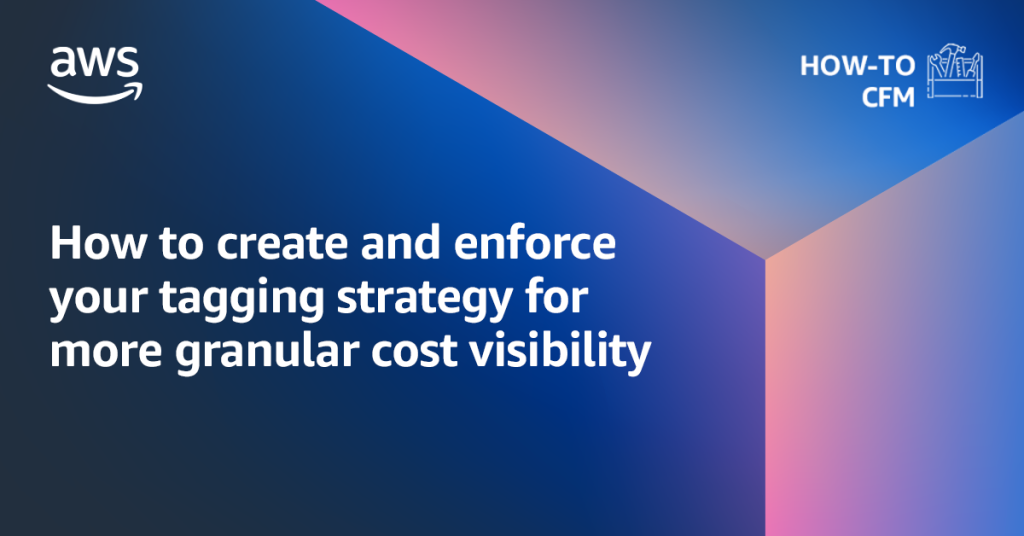AWS Cloud Financial Management
Category: Customer Solutions
Automating custom rates at scale: an Amazon case study with AWS Billing Conductor
In this blog post, we discuss how Amazon used AWS Billing Conductor to build a custom solution, enabling them to view their AWS cost at internal rates in AWS Cost Explorer and AWS Cost and Usage Report (CUR).
Managing Costs with Cloud Financial Management Technical Implementation Playbooks (CFM TIPs) for AWS
AWS Cloud Financial Management Technical Implementation Playbooks (CFM TIPs) – The complete playbook for implementing and improving effective Cloud Financial Management capabilities in your organization. Utilizing the Cloud Financial Management framework and the Cost Optimization pillar in the AWS Well-Architected Framework, we have built an accessible step-by-step playbook to help you to implement a specific set of capabilities in your organization. This results in mechanisms that ensure ongoing, self-sufficient cost optimization and governance.
How Coinbase Built a Cloud Center of Excellence to Optimize their Cloud Costs on AWS
Dr. Adam Link, Engineering Manager, Coinbase Cloud Center of Excellence and Schalk Theron, Director of Engineering, Coinbase Cloud Foundations contributed to this blog. Introduction and Challenges Coinbase is a secure online platform for buying, selling, transferring, and storing cryptocurrency. Their mission is to create an open financial system for the world and to be the […]
How Cvent saved over $3M in less than two years by creating a cost-aware culture
By using CUDOS and the CID Framework, Cvent provides its centralized governance teams with greater visibility across all organizational spend in a simple, cost-effective manner. More importantly, that same visibility is available to budget managers and engineers, which decentralizes the ownership of the budget details. Cvent’s mindset and processes are shifting from reactive spend investigation to proactive cost optimization during planning and deployment, which fosters a high degree of financial predictability expected from investors and shareholders.
Improve cost visibility of Amazon ECS and AWS Batch with AWS Split Cost Allocation Data
We’re excited to announce that the cost data for Amazon Elastic Container Service (Amazon ECS) tasks and AWS Batch jobs is now available in the AWS Cost and Usage Reports (CUR). With AWS Split Cost Allocation Data, you can easily understand and optimize cost and usage of your containerized applications, and allocate application costs back to individual business entities based on how shared compute and memory resources are consumed by your containerized applications. Learn how to opt into and view your Split Cost Allocation Data.
Telenor simplifies data access and control with Row Level Security
In some cases, users can be hindered with access to all available cost data for an organization. With Row Level Security (RLS), you can restrict the data a user can see to a subset of the business most relevant to them. In this blog, we’re going to walk you through how Telenor implemented RLS on its Multi-Payer Cost Dashboards, and how you can, too.
New Cost Explorer users now get Cost Anomaly Detection by default
Starting today, AWS Cost Anomaly Detection will be automatically enabled for all new AWS Cost Explorer customers by default to help save time and increase cost control. This means that if you own a standalone account or management account and enable AWS Cost Explorer, on or after March 27, 2023, you will automatically have a default configuration of AWS Cost Anomaly Detection that monitors your spend by AWS service and emails you a daily summary when a cost anomaly above a certain threshold is detected.
How to create and enforce your tagging strategy for more granular cost visibility
In this post, we’ll show you what tools you can use, and how you can use them to define, implement, and enforce a tagging strategy that improves your organization’s cost awareness using AWS Cost Explorer, AWS Organizations, AWS Tag Editor, and AWS Config.
Get cost estimates faster with AWS Pricing Calculator bulk import
AWS Pricing Calculator now supports the ability to bulk import Amazon Elastic Compute Cloud (Amazon EC2) instances, dedicated hosts and Amazon Elastic Block Store (Amazon EBS) volumes using a structured Excel template. The new feature will allow you to estimate a fleet of EC2- or EBS-based resources at a fraction of the time and allows for quick iterations.
How-to chargeback shared services: An AWS Transit Gateway example
In this blog, we will review how to define a chargeback and cost allocation strategy, and then walk you through a reference architecture to build and automate the chargeback process. The example will provide prescriptive guidance to chargeback AWS Transit Gateway costs.









